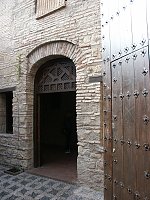
|
The entranceLocated in the Juderia, a maze-like conglomeration of narrow streets, this synagogue is entered after crossing a small plaza; thus there is no street entrance to the building. Although it has recently been reused for services, it had had other uses after the Jews were banished from Spain in 1492 CE. Before that for about two centuries it was one of several synagogues and part of the lively spiritual and intellectual life in Córdoba when Jewish, Moorish and even Christian thinkers made that capital city of the caliphate their home. (The monument to Maimonides is just down the street.) None of the other early synagogues remains. The building has only two downstairs rooms--an entry atrium and the praying room. The entry has a staircase to the upstairs women's gallery. |
| |
|
The rich plaster Mudéjar decorationThis raised stucco work consists of geometric patterns (four or six or eight pointed stars) and organic vegetal forms. The inscriptions, primarily from the Psalms, are in square Hebrew characters. |

|
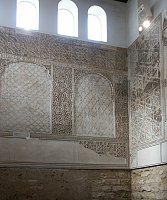
|
| |
|

|
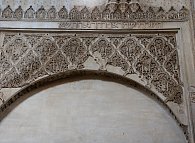
|
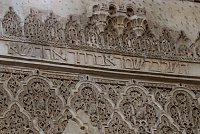
|
| |
|
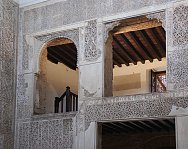
|
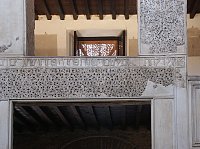
|
The southern wall, over the entrance door with the women's gallery on the second levelThe Gallery overlooks the main sanctuary through small balconies. |


 Click here to return to index of art historical sites.
Click here to return to index of art historical sites.
 Click here to return to index of artists and architects.
Click here to return to index of artists and architects.
 Click here to return to chronological index.
Click here to return to chronological index.
 Click here to see the home page of Bluffton University.
Click here to see the home page of Bluffton University.
